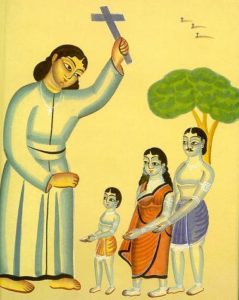
Tamizh as a language is deeply interweaved with the philosophy of Sanatana Dharma and has always resonated the high ideals of Hinduism in all the literary works.
The esteemed and noble thoughts of Sanatana Dharma is conveyed to the Tamizh speaking masses through both Needhi Ilakkiyam (Moral Literature) like Thirukkural, Aathichudi, Kondrai Vendhan, Naaladiyaar, Inna Naarpadhu, Iniyavai Naarpadhu and Bakthi Ilakkiyam (Devotional Literature) like Devaram, Thiruvasagam, Thiruppavai, Thiruvempavai, Naalayira Dhivya Prabandam, Kandar Anuboodhi. Needless to mention about the 5 mega Kappiyams (Major Literature) as well as the Tamizh version of Ramayana and Mahabharata. All these literary works are directly inspired by Vedas, Upanishads, Puranas and Bhagavad Gita and declare their alignment to Sanatana Dharmic principles in unequivocal terms.
As this is the case, the anti-national and evangelical forces, who came to Southern part of Bharat a few centuries ago, with an ulterior motive of religious conversion and colonialism, utilized any platform to befriend the common public and pursue their nefarious agenda. Thus, the rich Tamizh literature also became an attraction to them and they found it convenient to reach out to masses through Tamizh literature. In order to proselytise the local masses, they studied the Tamizh language to conduct sermons and identify themselves with the community.
The purpose and mission of the so-called “Tamizh scholars” Constantine Joseph Beski from Italy, Robert Cladwell and George Uglow Pope from England is religious conversion and they learnt Tamizh to augment their agenda. As they learnt Tamizh from local teachers, they understood that the teachers are highly knowledgeable but are stricken in poverty. These foreign Xtian missionaries took advantage of the situation, got the local Tamizh teachers to write various books including dictionaries and grammar notes and released them in their names to gain popularity and camouflage their ill-intentions.
They continue to indulge in this cheap tactic till today, but with more rigour. In addition to literature, they are preying on other ancient Tamizh Hindu identities to appropriate them for their filthy objective. Thus, we see the xtian missionaries wearing saffron robes, sporting a tilak on their forehead, conducting car (Ther) festival and have Dhwaja Stamba (Kodi Maram) in churches, call church as Aalayam and call the pastor as Poosari. All done to deceive Hindus into believing that there is not much difference between Hinduism and xtianity and that it is only the way of worshipping that differs. The recent attempt to popularize a “Thevaram” written by Constantine Joseph Beski is a part of this ploy.
It is high time, Hindus understand the cultural theft that is happening in the name of secularism and that Hindus are being robbed off their ancient Hindu identity by anti-national forces. By appropriating Thirukkural and Thevaram, xtian missionaries are trying to create a wrong narrative for posterity to confuse Hindus. If Hindus allow these misappropriations to continue, after a few decades, Hindu community will have to grapple with 2 Thirukkurals, 2 Thevarams, 2 Upanishads – One in the line of Hinduism and another in the line of xtianity.
This would give a handle to Tamizh separatists to further their agenda of Tamizh Nationalism and separatism, which would spell a doom for Tamizh Hindus.
Hence, it would be in the best interest of Tamizh Hindus to be aware of this cultural theft and nip this in the budding stage for their overall growth and prosperity.

